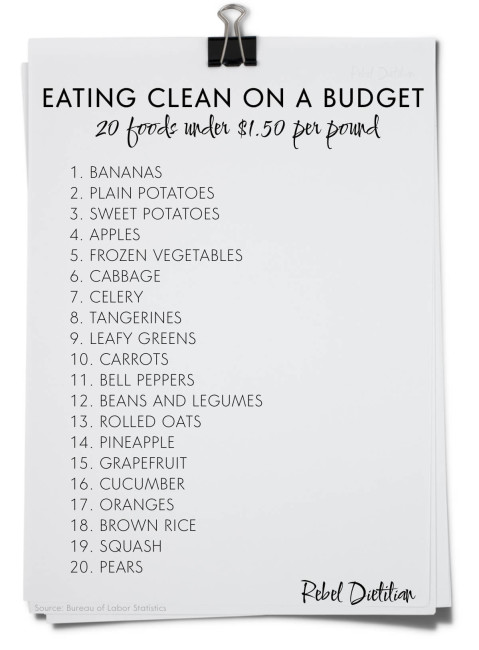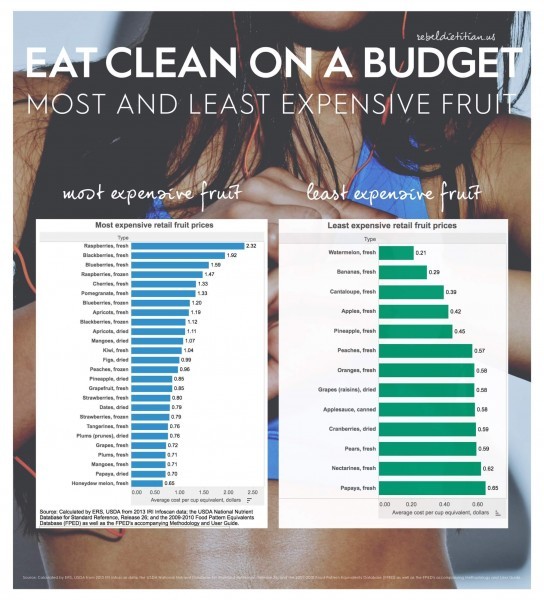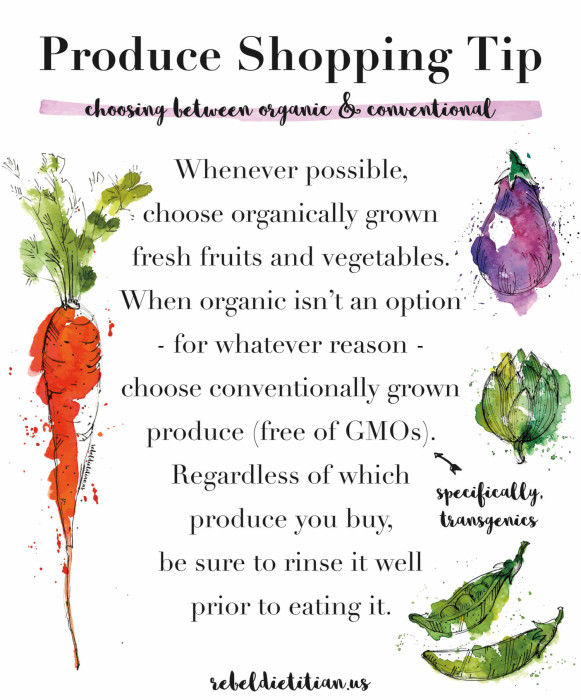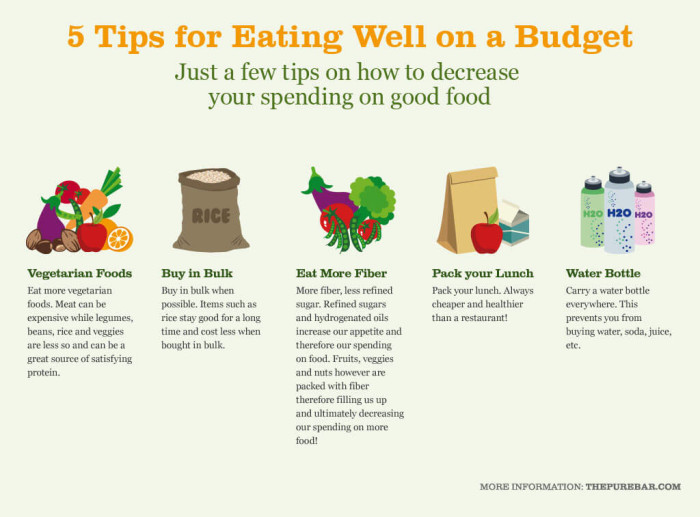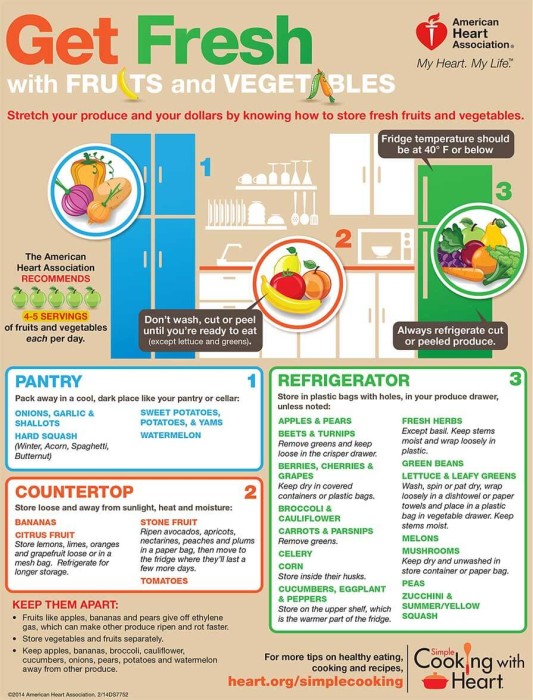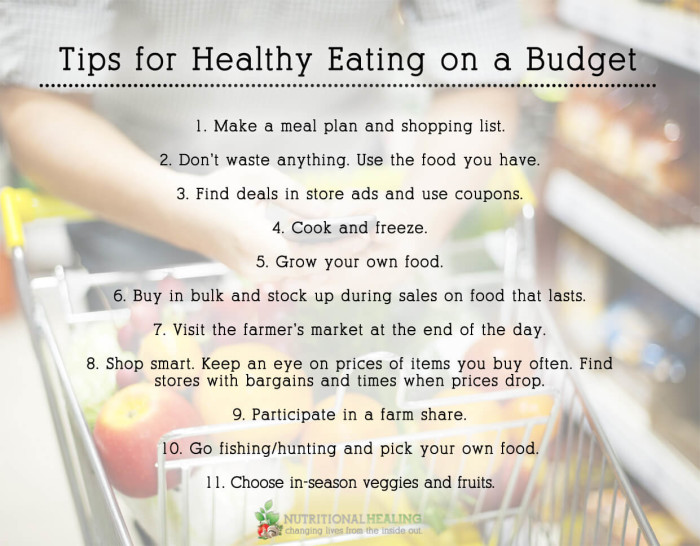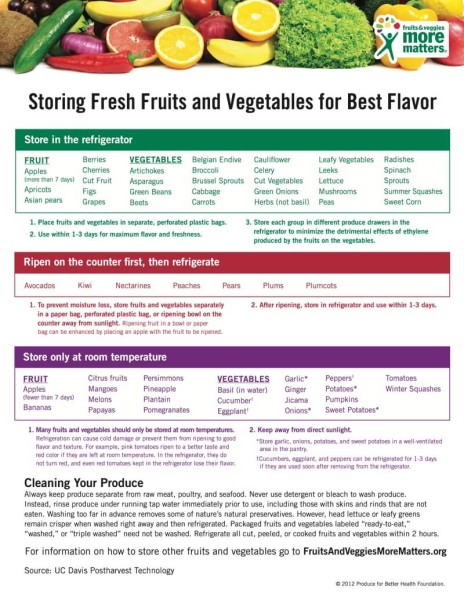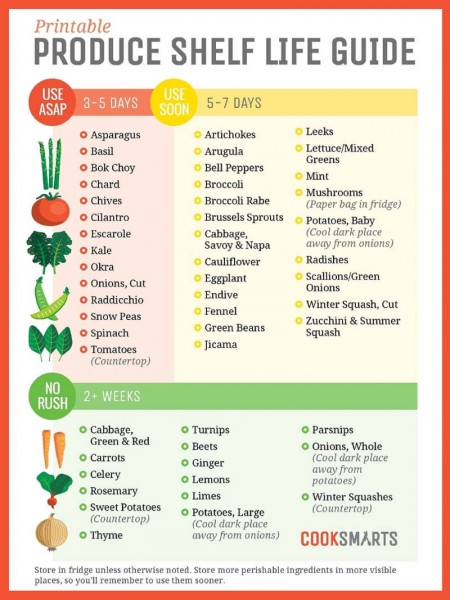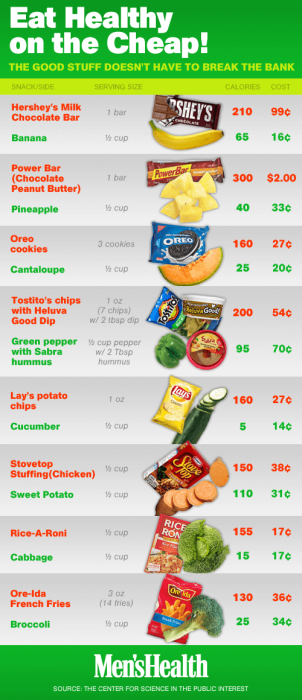Eating clean on a budget doesn’t have to be expensive. Use these tips and materials to make healthy choices while staying within your budget.
Eat Meals at Home
- Eating out adds a significant amount to the family budget.
Buy in Bulk
- See a great deal on fresh organic blueberries? Buy in bulk and freeze the excess for later.
- Frozen produce can be used in a variety of recipes including smoothies, soups, and prepared meals like spaghetti.
Reduce Food Waste
- The average American throws away between $28-43 of food each month (or 20 pounds).
- In the U.S., we waste around 40 percent of all edible food.
- Reducing food waste saves money and our precious resources.
- NRDC: Your Scraps Add Up
Store Produce Properly
- Only purchase what your family can reasonably eat within a few days.
- If you notice produce getting ready to expire, prep it and freeze it for later.
- Notice bananas starting to turn brown? Peel them and freeze them for use at a later date (e.g., in smoothies).
- To view produce storage and handling guidelines, see the page titled Produce Storage and Handling.
Buy Frozen Produce
- Frozen fruits and vegetables are a healthy and less expensive alternative to fresh fruits and vegetables.
- To reduce micronutrient losses associated with preparing food with heat, consider steaming your frozen vegetables.
- Avoid adding ultra processed sources of fat and sugar (e.g., butter) to foods prepared with heat. In general, ultra processed food ingredients are high in calories and contribute to weight gain.
Eat Seasonally
- Seasonal fruits and vegetables are less expensive than produce out of season.
Don’t Stress About Organic
- If you can’t afford to purchase everything organic, that’s OK. Just do your best.
- Another option would be to use the EWG’s Guide to Pesticides in Produce to identify which fresh fruits and vegetables are highest in pesticide residues, and then purchase the organic version of these items.
Power Up with Plant Protein
- In general, plant-based protein is significantly less expensive than animal products.
Bring Back Beans
- Beans and legumes are incredibly nutrient-dense and far less costly than animal-based protein.
Make It Whole [Grain]
- Minimally processed 100% whole grains are healthful and generally less expensive than fresh produce.
- Whole Grains include steel cut oats, rolled oats, brown rice, quinoa, non-GMO corn, wheat berries, buckwheat, etc.
Get Back to Your Roots
- Incorporate more root vegetables into meals. Root vegetables are are healthful and generally less expensive than fresh produce. Root vegetables include carrots, potatoes, and sweet potatoes.
Grow Your Own
- Grow your own fresh fruits, vegetables, and herbs.
Know Your Farmer’s Market
- To identify local farmer’s markets in your area, check out LocalHarvest.org
Connect with Local Co-Ops/h5>
- Some local co-ops offer deals on produce purchased in bulk.
- To identify your local co-ops, visit the coopdirectory.org.
- I’ve heard great things about Bountiful Baskets (www.bountifulbaskets.org).
- Look into Community Supported Agriculture (CSAs).
Shop Online
- Shop online for the best online or in-store deal. Surprisingly, I saved a fair amount on specialty products by purchasing these items online.
- With this being said, it is important to note that these foods often have a higher carbon footprint due to shipping.
Join a Member Savings Clubs
- Invest in a membership to Costco or another member-savings club.
- Costco offers organic produce at a fraction of the price.
Split the Cost
- Ask your neighbors and family members if they would be interested in splitting produce purchased in bulk with you.
- For example, if you purchase a huge flat of apples, ask a friend if he/she would want to split the cost and take half.
Connect with Produce Distributors
- If access to fresh produce is a barrier, consider contacting a local produce distributor.
- These guys are the ones who sell produce in bulk to local restaurants, schools, etc.
- Perhaps you can purchase a small flat of produce? You never know, they may be able to help somehow!
Pick Your Own
- Pick your own farms offer discounts to individuals and families who are willing to get dirty.
Learn More
Rebel Lifestyle
To learn more about my lifestyle, visit the page titled Rebel Lifestyle.
Rebel Grub
To view photos of my grub, check out the page titled Rebel Grub.
Meal Planning
To view meal planning information, head over to the page Meal Planning.
Shopping Lists
To view shopping lists, visit the page titled Shopping Lists.
Posters and Charts
To view my posters and charts, hit up the page titled Posters.
Pinterest and Facebook
Posters
Except where otherwise noted, content on this site is licensed under a CC BY-NC-ND 4.0 license. This means you are free to use my work for personal use (e.g., save the file to your computer or share via social media) as long as you do not modify the image or use the image for commercial purposes ($).
 Rebel Dietitian Dana McDonald, RD
Rebel Dietitian Dana McDonald, RD 